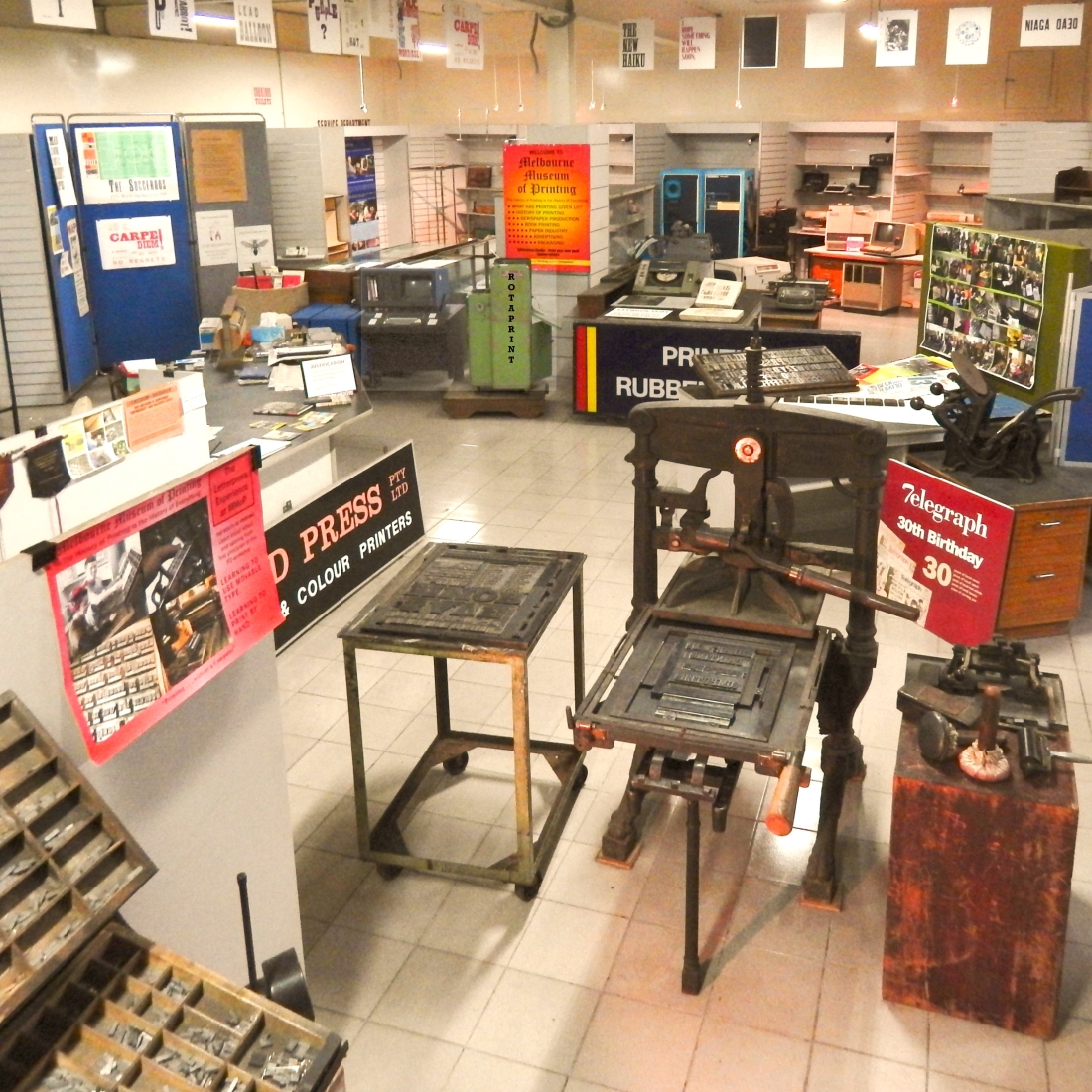
A View of the Showroom
IMAGE IS 1100 x 1100. . . LARGER IMAGE 2200 x 2200 CLICK HERE 2.9 MB
|
|
|
 |
|
A View of the Showroom IMAGE IS 1100 x 1100. . . LARGER IMAGE 2200 x 2200 CLICK HERE 2.9 MB |
|
The Showroom is the entrance hall of MMOP. This room displays examples of the various kinds of machines and other items found throughout the Museum. This web-page group also serves as a showroom to other parts of the Museum.
A key feature of the MMOP Showroom is the display of basic typesetting from a pair of typecases. They are just visible in the lower left corner of the main image. Most of the MMOP programs commence here, with a demonstration of typesetting with movable types. 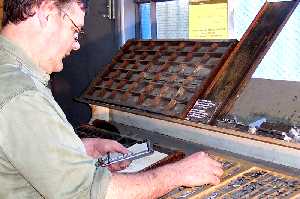
Movable type has been the basis, since the 15th century, for letterpress printing. Assembling words, lines and pages letter by letter was the only method of composing text for printing for over 400 years. An alternative to composing was carving each letter of each page of text into a slab of wood. Mechanical typesetting (sometimes called hot-metal typesetting) commenced around 1890 and was world-wide by 1920. This mostly involves machinery that responds to tapping the text on a keyboard: the machine then produces new types from molten metal "on the fly". Type produced this way is typically re-melted when printing is finished, and the metal is reused over and over. The Showroom includes an example of hot-metal typesetting machinery (a Monotype composition system) although we could not fit it into the main picture. And there are examples throughout the building including the Linotype (pictured), Intertype, Ludlow Typograph, Rogers Typograph, Monotype Composition System (pictured) and Monotype Supercaster. 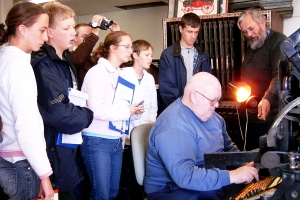
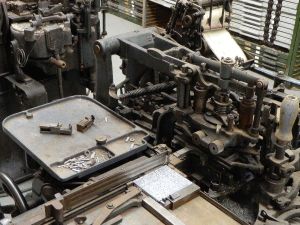
CLICK THE BORDERED IMAGES FOR EXPLANATION AND MORE PICTURES. MORE EXPLANATION PAGES ARE BEING ADDED ... PLEASE COME BACK AND SEE THEM. The collection includes many examples of type settings produced by these hot-metal methods as well as movable metal type, wood type and engravings. The various kinds can be mixed as needed because, to the press, it is all the same; all kinds of type and images are made to the same type height. 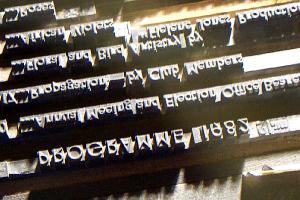
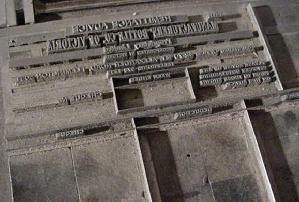
A number of complete pages of typesetting are on show, presaging the large collection of typeset pages from Melbourne's former letterpress industry. Along with the collection of engravings and the paper records of printed work and related documentation, these archival items are informative of the day-to-day work of the ordinary printer. A complete set of types of one size, set out in a pair of typecases (or commonly a single, combination typecase), is usually called a "fount" (pronounced 'font'). The name refers to the process of making the types by founding, that is casting from molten metal. In U.S. English the 'u' was dropped, in line with the pronunciation. A fount may also be wrapped in a parcel from the typefounder. The Showroom has numerous founts of type and spacing wrapped, ready for supply to universities, other museums and enthusiasts, and made in the typefoundry at MMOP, where we aim to keep the typecasting skills alive. 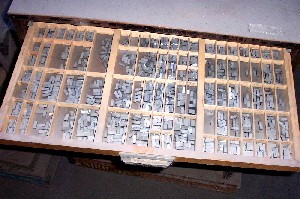
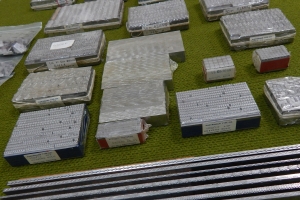
Also on view are examples of the beautiful and interesting printed posters and documents that our visitors and volunteers have made by hand in the "Composing Room" and the "Studio" elsewhere in the building. The displays include some examples of hand-printing from other letterpress studios in Melbourne. Some simple letterpress presses are on show, including our 1849 and 1856-dated "Albion" hand-presses and a variety of others. There are more varieties elsewhere in the Museum. The Studio is where most of the work is done. The working hot-metal typesetters and the poster-type collection are there along with several presses of various kinds. The most used are in the class of hand-operated cylinder proofing press. They are easy to use and the student can see everything that happens. 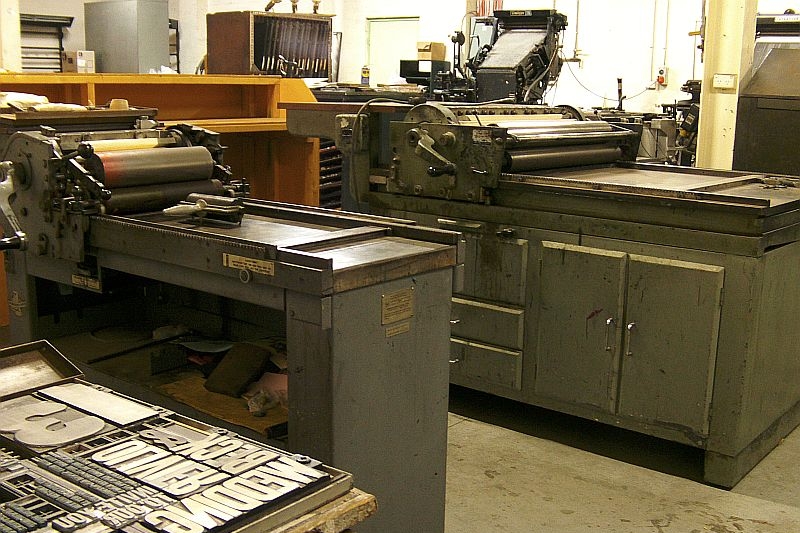
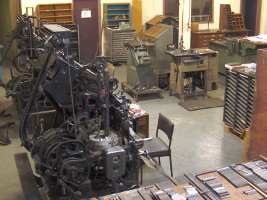
Other rooms and areas include the Composing Room, Paper Store, Ludlow and Linotype Matrix Stores, Bookbinding, Typefoundry with New Type storage, Refreshments Balcony, Lunch Room, Catering Kitchen, Toolroom, three Meeting Rooms, Bulk Store, General Storage areas, Offices, Amenities and off-site Annexe. The floor area is just over 3000 sq.m (33,000 sq.ft) excluding the annexe. A floor-plan appears below. With the letterpress method of printing, any image to be printed needs to be in the form of an engraving, with the engraved, lowered areas avoiding the ink and the remaining, raised areas receiving the ink and printing. There have been many systems for engraving, starting from the use of hand tools to cut away the non-image areas of wood or other material such as linoleum. These progressed after the invention of photography to the use of a photographic negative and a strong acid to eat away the lowered areas: this is known as photo-engraving. MMOP has thousands of such original engravings, and many more made by the widely-used copying process (moulding and casting) known as stereotyping. 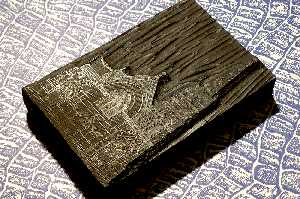
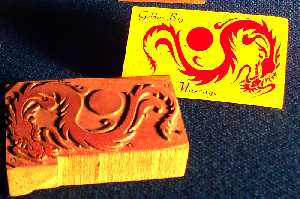
The change from letterpress to lithographic printing occurred slowly from around 1800: images could be hand-drawn, but the process required text to be composed in the letterpress method, printing a single copy to be transferred to the stone or plate. Thus while litho was attractive for works mainly of illustrations, there was less incentive to use litho for works of text. From around 1970 the change away from metal type moved faster, thanks to new systems that could produce the neatly printed text straight onto paper or film. These systems were advanced typewriters, photographic typesetters, electronic typesetters and eventually computerised typesetters that mostly produced columns of text that then had to be pasted together to assemble a complex page. Around 1985, computerised systems werre developed that assembled entire pages for output onto paper or film. The Showroom displays examples of computerised and pre-computer typesetting systems for lithography. Newer systems now print the words and images straight onto the litho plate: such systems will be in the Museum in their turn! A 1950s small offset (Offset Lithographic) printing press is visible in the main photo, along with some lithographic stones and plates. The Litho process began with large, flat, fine-textured stones and eventually moved to using flat metal plates. Plates are lighter and can be curved around a cylinder for higher productivity. Lastly, but not least: The film and TV industry has noticed MMOP and used the Museum as a filming location several times and at other times picked up a truckload of machines and other things to use on their set elsewhere. Twice in recent times the MMOP "Newspaper Linotype Composing Room" has been used for TV. Here's one of the episodes taking place. 
. |
THE FLOOR PLANSTo help visualise the size and intended layout of the two floors of the Museum. These two images can be saved and printed out up to A2 size. 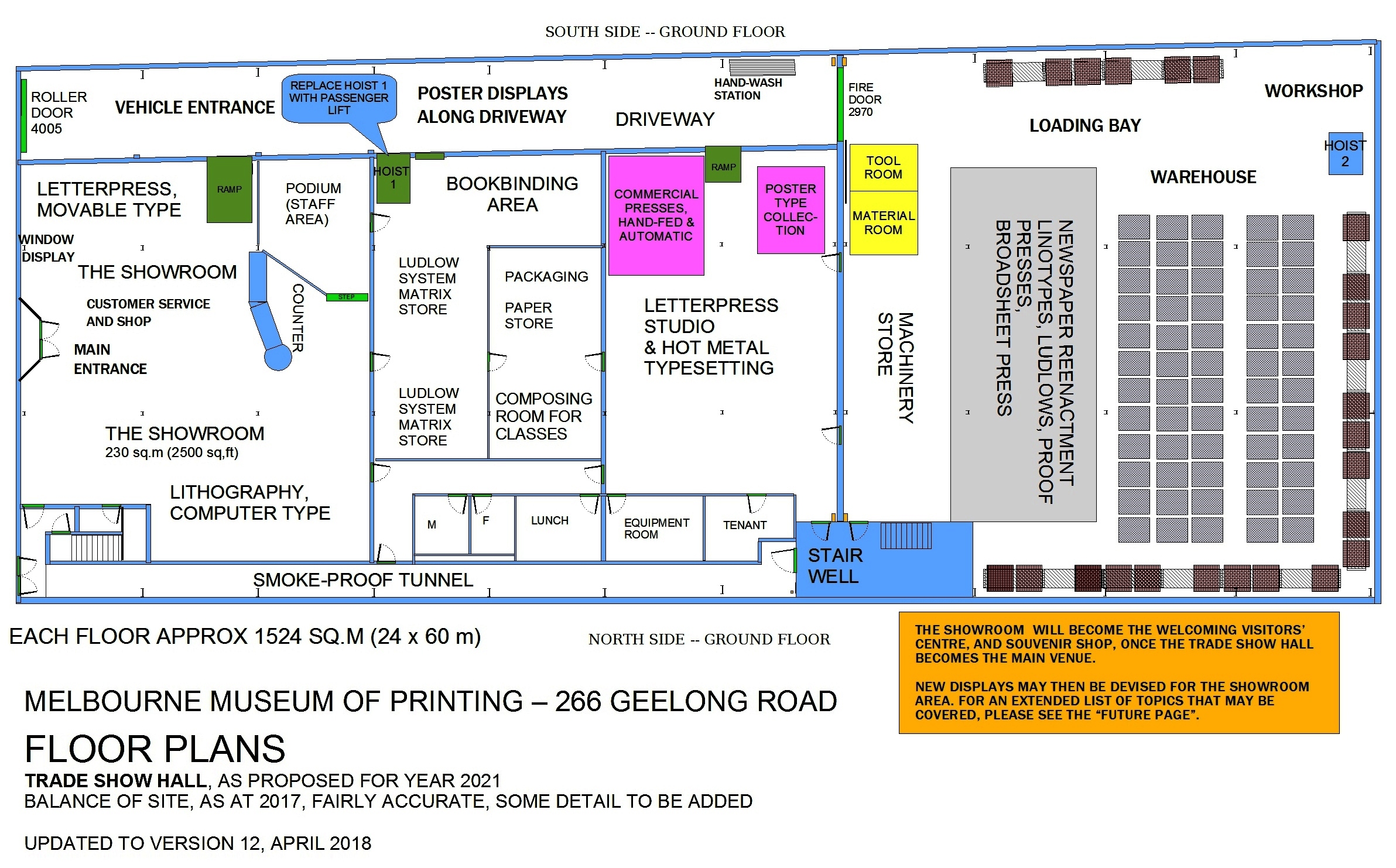
. 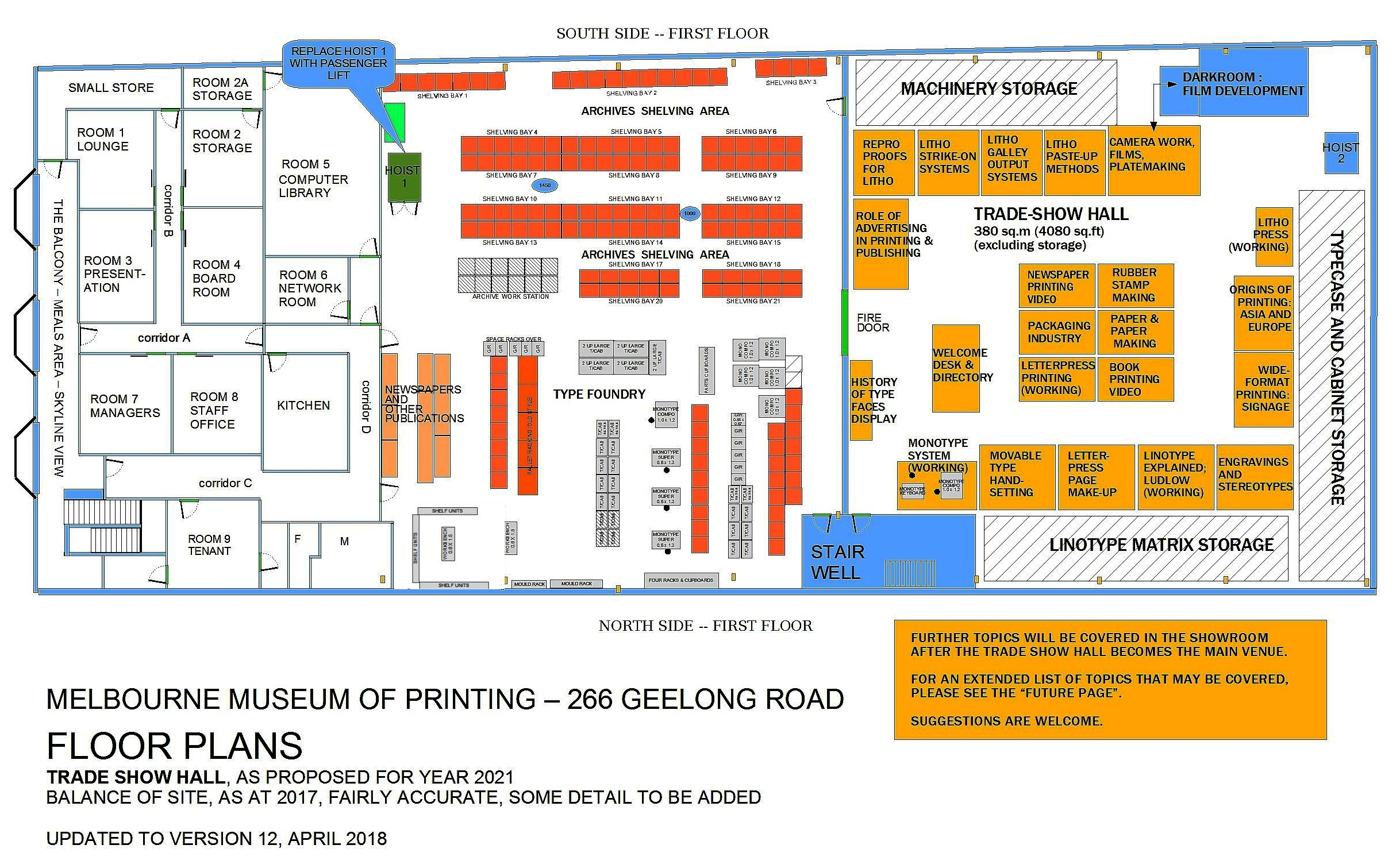
| ||
|
MMOP Home Page The Leaflet Revealed | ||
|
ALL IMAGES AND TEXT ARE COPYRIGHT © MMOP 2016 mmop.org.au/copyright.htm | ||